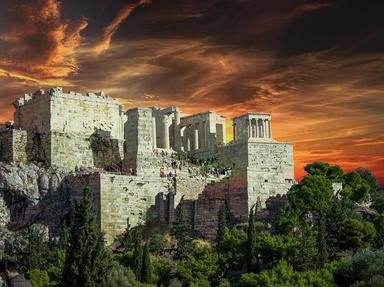Quiz Answer Key and Fun Facts
1. The Elgin Marbles, also known as the Parthenon Marbles, were removed from Greece by Lord Elgin. In what capacity did he serve, which made the removal of the artifacts possible?
2. Which empire controlled Greece at the time the Elgin Marbles were removed?
3. Lord Elgin was not supported by the British government, and absorbed the cost of removal and transport of the Elgin Marbles from his own money.
4. Approximately 80% of the original Parthenon Frieze still exists today. Which great Greek sculptor is commonly given credit for the project?
5. One of the statues that is part of the Elgin Marbles is a caryatid, one of six female figures that held up the roof. From which temple was the caryatid taken?
6. Taken from the Parthenon, one of the Elgin Marbles is a metope that shows a mythical fight between the human Lapiths and creatures who were part horse and part human. What were these creatures called?
7. The group of artifacts known as the Elgin Marbles includes artifacts taken from sites other than the Acropolis. What is the name of the tomb at Mycenae that was also explored?
8. According to the legend, this horse was one of a group who spent the night pulling the chariot of the moon goddess across the sky. What was the name of the moon goddess?
9. Which famous Englishman opposed the removal of the Elgin Marbles from Greece?
10. Which famous leader of Lord Elgin's day was interested in acquiring the Parthenon Marbles?
Source: Author
ponycargirl
This quiz was reviewed by FunTrivia editor
bloomsby before going online.
Any errors found in FunTrivia content are routinely corrected through our feedback system.

